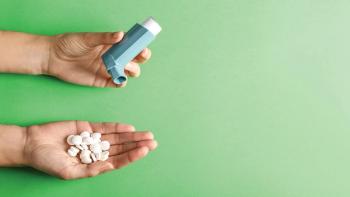
Commentary: A Competitive Marketplace for Biosimilars
FDA/FTC collaborate to end false and misleading statements and discuss the future of biosimilars at March 2020 public workshop on a competitive marketplace for biosimilars.
Viewpoint
On March 9, 2020, FDA and the US Federal Trade Commission (FTC) held a public workshop to discuss issues related to biosimilars in the United States. According to FDA and FTC, the workshop’s purpose was to discuss the “FDA and FTC’s collaborative efforts to support appropriate adoption of biosimilars, discourage false or misleading statements about biosimilars, and deter anticompetitive behaviors in the biologic marketplace.” The workshop included speakers from the FDA, FTC, the pharmaceutical industry, biosimilar organizations, and patient advocacy groups. A public comment session allowed stakeholders to inform FDA and FTC of issues relevant to their businesses and organizations.
With 28 approved biosimilars in the US (including follow-on products, such as insulin, that were previously approved under section 505(b)(2) of the Federal Food, Drug, and Cosmetic Act but as of March 23, 2020 are deemed to be licensed as biological products under section 351 of the Public Health Service Act), 18 of which have launched (10 in the past 10 months) (1), and 76 development programs referencing 38 reference products active at FDA, there is reason for the optimism expressed by many at the workshop. But it was cautioned that in the US there is still a long way to go to increase uptake and lower prices.
Many challenges still facing biosimilar uptake in the US were discussed at the workshop, but potential solutions and steps FDA and FTC have taken to eliminate barriers were also discussed.
Misinformation
FDA and FTC are concerned about false and misleading advertising that is giving consumers the wrong information about biosimilars. According to Richard Cleland, assistant director, Advertising Practices, Bureau of Consumer Protection at FTC, by collaborating to take on this issue, FDA and FTC are trying to “cover the full waterfront” and catch all false and misleading statements, including by entities that are trying to avoid FDA jurisdiction by creating publications that are not subject to the FDA’s authority to regulate commercial speech. He also noted that FDA and FTC may issue warning letters to entities disseminating false or misleading statements, or file actions in district court.
Statements can be misleading in three ways: the claim can be false, unsubstantiated, or fail to disclose a material fact. In reviewing statements, FDA and FTC will look at the net impression of the material from the viewpoint of the target audience. While some knowledgeable consumers may be able to interpret some statements correctly, many consumers may be misled. Therefore, an advertiser will be liable for a misleading interpretation of their statements even if a non-misleading interpretation could exist.
Many examples of false and misleading statements set forth in FDA’s recent draft guidance, Promotional Labeling and Advertising Considerations for Prescription Biological Reference and Biosimilar Products Questions and Answers (2), were reiterated at the workshop, particularly noting that factually true statements may be misleading. Elizabeth Pepinsky, health science policy analyst, Office of Prescription Drug Promotion, FDA acknowledged that the distinctions can be quite nuanced, so it must be kept in mind that whether materials are truthful and non-misleading depends not only on the specific claims, but also the net impression of the piece as a whole.
FDA has requested stakeholder input on unique considerations for interchangeables that should be addressed in its final guidance. One request discussed during the public comment session by Ian Orekondy, founder and CEO of AdComplyRx was guidance on statements in online media with limited character counts such as Google and Twitter, particularly those that do not mention a particular drug, but link to a brand’s website.
One effect of misleading advertising discussed was the “nocebo” effect-the opposite of the placebo effect-which occurs when a patient’s negative expectation of a treatment causes that treatment to have a more negative effect than it should. This can happen when patients perceive that biosimilars are inferior to originators based on negative suggestions from sources like advertising, healthcare providers, or social media, even if the negative suggestions are unintended. Carefully considering language was emphasized, as even things seemingly innocuous like commercials with patients stating that, “I love my innovator biologic,” can be suggesting that the innovator is superior and giving patients a negative impression of biosimilars. Other examples given were using words to describe biosimilars such as “copies,” “cheaper,” or “generic,” which also elicit the perception of inferiority.
Exclusionary contracting, discounts, rebates, reimbursement, formulary placement
Although physician reluctance to prescribe biosimilars has often been cited as a reason for slow uptake in the US, multiple stakeholders sought to clear up this misconception, stating that physicians have experience with biosimilars, they do not feel biosimilars are inferior to reference products, and they are comfortable prescribing biosimilars, particularly to treatment naïve patients. While there is some hesitancy to switch stable patients, especially those with certain hard-to-stabilize diseases, greater experience switching patients has led to greater uptake, particularly in health plans like Kaiser Permanente that have taken carefully planned measures to switch patients. According to Sameer Awsare, associate executive director, The Permanente Medical Group, Kaiser consulted with doctors to determine what drugs to use in its system and studied the results of switching patients on infliximab to biosimilars. They found there was no increased risk of disease worsening in patients who switched, which led to quicker uptake by physicians in Kaiser’s system for newly marketed biosimilars.
Additional requests focused on who gets rebates on drugs, as many times the discounts are given to middlemen, not patients. A study on the list prices of biologics versus their net prices (prices after rebates and discounts) presented by Inma Hernandez, assistant professor, University of Pittsburgh School of Pharmacy, confirmed that discounting benefits insurance companies while hurting those without insurance who must pay list prices in cash and people with high deductible plans (3). Hernandez found that when biosimilar competition entered the filgrastim, pegfilgrastim, infliximab, and insulin glargine markets, list prices for innovative drugs stayed the same while net prices fell. The discounts given were to payers other than Medicaid, with Medicaid discounts staying stagnant after biosimilar entry, while non-Medicaid discounts increased. It is unclear whether out-of-pocket prices have changed for consumers with insurance or whether these discounts are mainly going to middlemen because of lack of information on out-of-pocket costs.
Interchangeability
Interchangeability is a concept unique to the US and has caused much debate and potential confusion. FDA pointed out various examples of how statements related to interchangeability can be misleading and cause confusion for consumers in the draft guidance Promotional Labeling and Advertising Considerations for Prescription Biological Reference and Biosimilar Products Questions and Answers (2). For example, in innovator materials, suggesting that a biosimilar is less safe or effective because it has not been licensed as an interchangeable would be misleading. In materials for biosimilars that are not licensed as an interchangeable, sponsors need to avoid creating the impression that they have been licensed as interchangeable.
There is an ongoing debate over whether the separate interchangeability designation should remain in the US. Arguments against it point out that additional clinical trials cause delay and waste money, and opponents do not believe the designation has much of an impact since biosimilars are already used somewhat interchangeably with innovator products (except for automatic substitution), particularly those administered in doctor’s offices.
Those in favor of the interchangeability designation believe the additional testing is beneficial for patient safety. An unspoken argument from innovators in favor of the provision is that it will delay biosimilars being automatically substituted for innovator products, which will allow them to maintain market share and keep prices higher for longer.
A common theme at the workshop was that interchangeability will only have an impact on drugs administered through a pharmacy, not those administered at a doctor’s office. A doctor’s office will stock the drug that it gets the best deal on and administer that, without regard for interchangeability. Currently, while there are some self-administered biosimilars approved by FDA, none have launched. Therefore, there has yet to be a circumstance in the US where interchangeability could have a big impact on market share.
Uncertainty
Uncertainty in the biosimilars market has long been a concern, from the clinical testing required for approval, to navigating the legal landscape of the Biologics Price Competition and Innovation Act of 2009 (BPCIA) patent dance and wading through patent thickets. In the FDA/FTC workshop, however, the uncertainty most discussed was that of pricing.
As discussed by Alex Brill, resident fellow, American Enterprise Institute, in the small-molecule generic drug market, generally innovator companies have kept their drug prices constant in the wake of generic market entry, and that was the assumption for the biosimilar market as well. However, according to Hernandez, instead innovators have lowered their net prices in response to biosimilar competition by increasing discounts (3). Brill noted that this was unexpected and could be harmful to biosimilar manufacturers as they are not as easily able to compete on prices as they thought they would be and may have a harder time recovering their development costs. For example, if a biosimilar planned to compete by lowering its price to 20% less than the innovator, but the innovator then lowered its price by 20%, the biosimilar will have a difficult time gaining market share. While it is encouraging to see overall costs drop, Brill thought that pricing uncertainty could discourage biosimilar manufacturers from entering the market now and cause them to wait to see what happens.
Market shares
According to information presented by Murray Aitken, executive director, IQVIA Institute, at the workshop (4), US pharmaceutical net spending increased from $285 billion in 2014 to $344 billion in 2018, with spending on biologics increasing 12% during that time period. In that same time, the proportion of net spending on small-molecule drugs decreased from 70% to 58%, while the total amount spent on small-molecule drugs stayed relatively consistent. The increase in biologic drug usage is likely to continue, as biologics are currently being developed in most therapy areas.
Aitken presented data by IQVIA finding that by the end of 2019, only 17% of the biologic drug market faced biosimilar competition, but when all approved biosimilars launch, 50% of biologic drug sales could face biosimilar competition. So far, biosimilars have only captured about 20% of the market share, compared to 97% for generic drugs.
In the future, it would be interesting to explore market shares within different methods of administration, because there may be big variations in biosimilar uptake between drugs that are administered at the doctor’s office compared to those dispensed at a pharmacy. It would also be interesting to explore the uptake of biosimilars in different specialty areas, because some diseases are more difficult to treat, which may cause reluctance to try new alternatives or switch patients to biosimilars.
Additional ideas
Product-specific FDA guidance documents, like that issued for insulin, were frequently requested throughout the workshop. Because each product has its own set of considerations, these guidances would help clear up remaining uncertainty for biosimilar manufacturers.
US stakeholders frequently look to Europe for ideas on how to grow the US biosimilar market. One popular suggestion was to use savings sharing programs in the US similar to those used in the European Union, particularly to get the US over the initial biosimilar uptake hurdle. There are concerns though that the savings sharing needs to be with patients and not doctors, because patients won’t trust their doctors if they think doctors are making decisions just based on money and not on what is best for patients.
Overall, the workshop was a very helpful step in continuing the discourse on biosimilars in the US and laying out ideas for the future. There is much reason to be optimistic that the US biosimilar market will continue to grow, especially with further guidance and oversight from FDA and FTC.
About the authors:
April Breyer Menon is the founder of April Breyer Consulting. Ha Kung Wong is a partner in Venable Fitzpatrick's IP Litigation and IP Transactions practice groups.
References
1. BiologicsHQ, Biosimilars Approved in the United States as of April 30, 2020, www.biologicsHQ.com, accessed May 5, 2020.
2. FDA,
3. A. San-Juan-Rodriguez, et al., JAMA Netw Open. Online, 2(12) (2019).
4. M. Aitken, “Biologics Market Dynamics: Setting the Stage for Biosimilars,” presentation at FDA/FTC Workshop on a Competitive Marketplace for Biosimilars (Silver Spring, MD, March 9, 2020).
Newsletter
Stay at the forefront of biopharmaceutical innovation—subscribe to BioPharm International for expert insights on drug development, manufacturing, compliance, and more.





